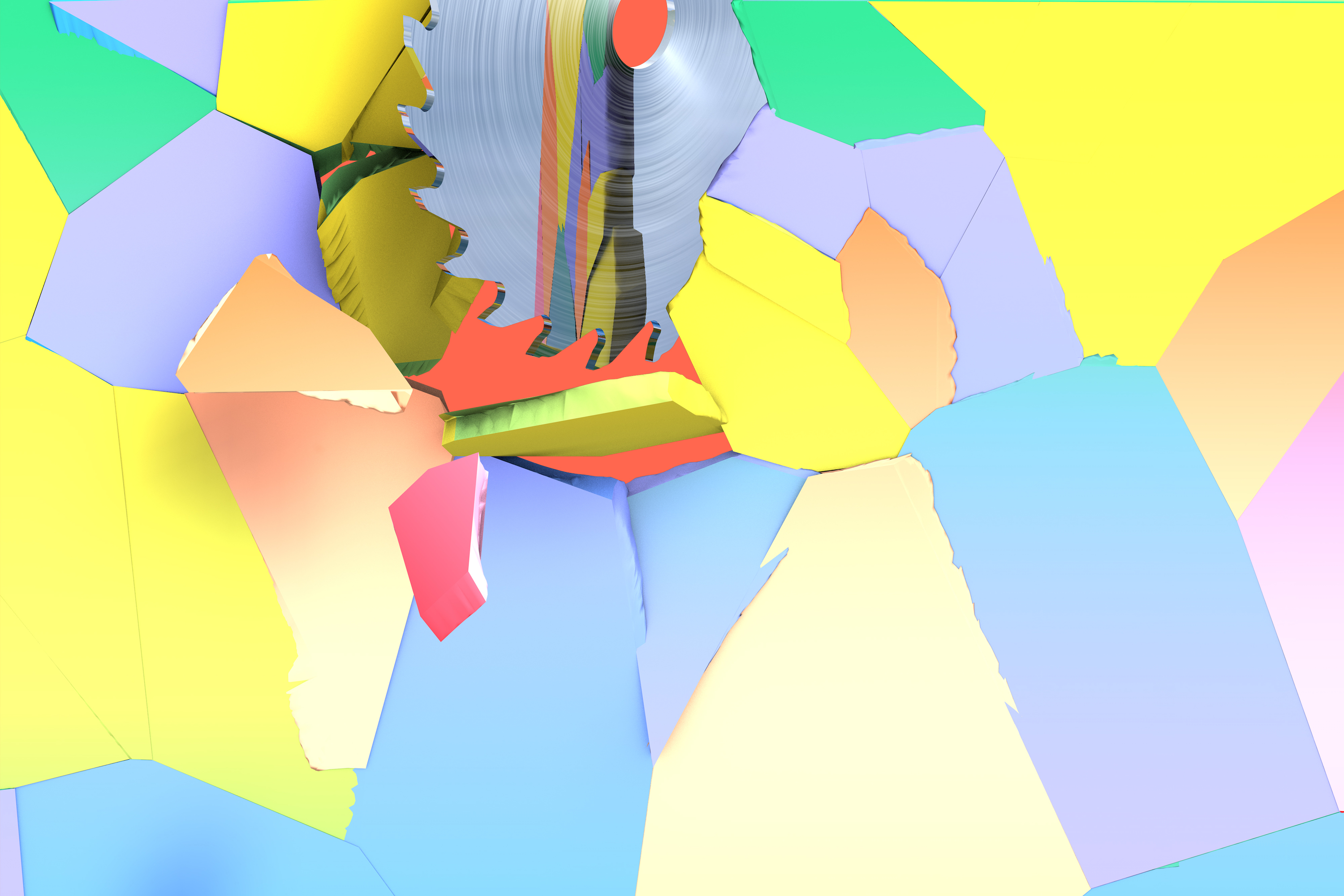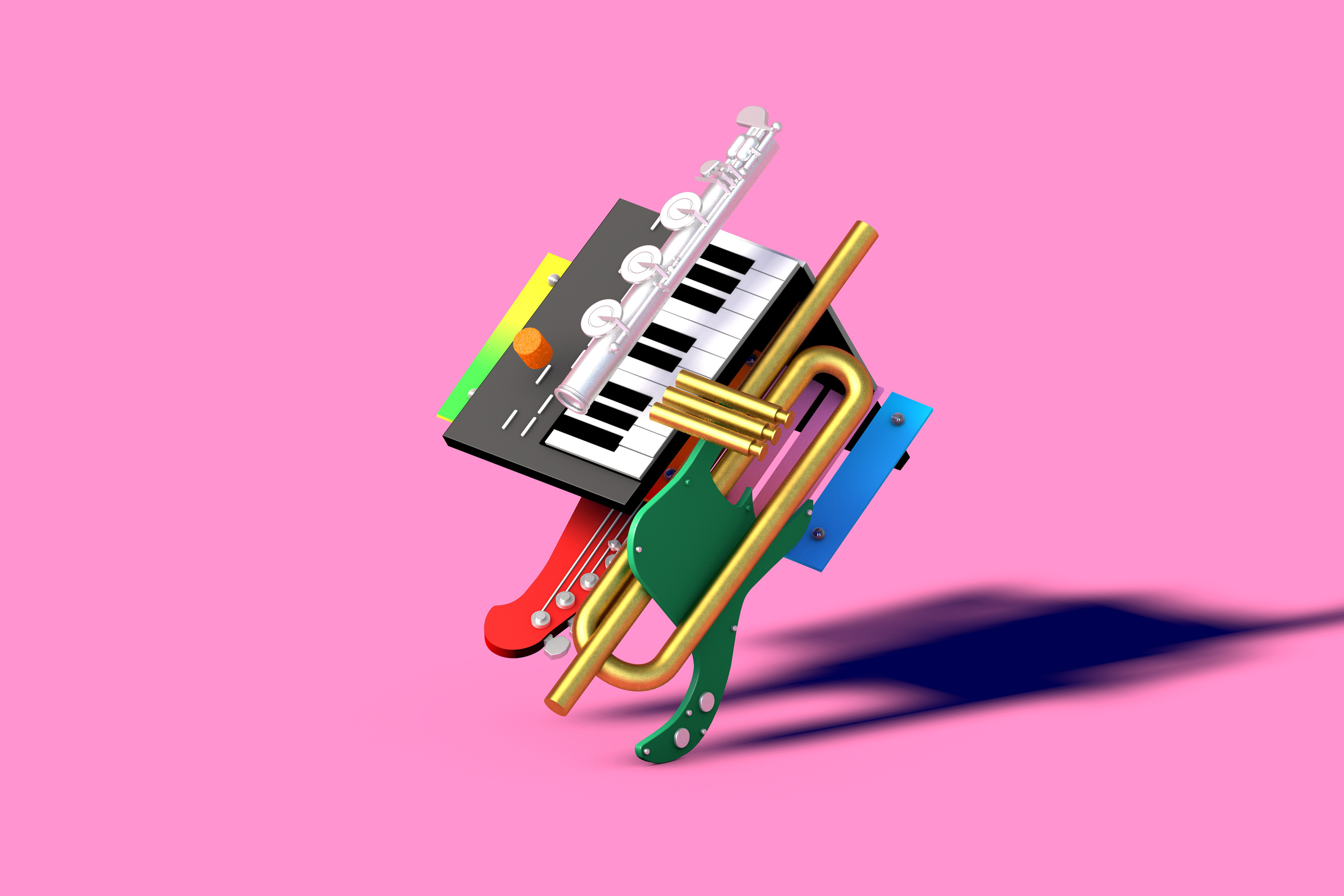
Sounds and Sawdust: The Instrumental Love Affair of Lou Harrison and Bill Corvig
Exploring the handmade percussion instruments of the queer American composer and his longtime partner
“He and I were constantly building instruments. We lived a life of mountains and music,” the late composer Lou Harrison said of his backwoods existence with partner Bill Colvig in Santa Cruz, California, in the documentary Lou Harrison: A World of Music. “Somewhere along the path of music’s development, there is an instrument for every child. And I’m still a child!”
That childlike wonder led to a decades-long flurry of DIY instrument production by one of the most fruitful partnerships in contemporary music: frippled aerophones, celempung zithers, octagonal-plated bonangs, iron-slabbed kempuls, chordophones, metallophones, plywood monochords, bowed psalteries, oil-can ghaychaks, aluminum xiao, resonators made from oxygen tanks and end-blown sulings. Hand-built by Colvig in their home workshop and elsewhere, many of these instruments were part of the pair’s famous giant gamelans – percussion ensembles modeled after Indonesian forebears, built out of any useful material at hand. These were particularly suited to Harrison’s all-embracing compositional style, which favored ancient tunings, a generous spirit of curiosity and traditional orchestration from around the world.
Make an instrument. You will learn more in this way than you can imagine.
Harrison was already one of the most influential composers in the US – revered for ushering lush “world music” into an austere academic scene – when he met Colvig in 1967 at San Francisco’s Old Spaghetti Factory performance space. Both were just shy of their 50th birthdays, and they made a quick match: Colvig a quiet, rugged, nature-loving electrician who came from a musical-showbiz family (his father was a bandleader and his uncle the voice of Disney’s Goofy), and Harrison, the avant-garde vet who toggled between joyous free spirit and petulant artiste. With their matching silver beards and bolo ties, and Colvig’s vast collection of flannel shirts, the two made an adorably cantankerous pair, out-and-proud gay teddy bears equally at home in idyllic nature (they were part of the Radical Faerie queer pagan movement) and cosmopolitan bustle.
Born in Portland to a Norwegian immigrant father and a mother obsessed with Asian decor, Harrison was raised in the San Francisco Bay Area and became fascinated by the Chinese opera, Native American music, Mexican folk songs and Japanese influences he heard growing up. Formative encounters with Alban Berg’s ravishingly atonal 1935 Violin Concerto (which he heard randomly on the radio), Gertrude Stein’s incantatory poetry and the Hindu philosophy of the Vedanta Society set him on his future aesthetic course. He studied music with composer Henry Cowell and started writing pieces for unusual percussion, including pots and pans and car-brake drums, which he sometimes performed with fellow Cowell student John Cage.
In 1942, Harrison took courses at UCLA with atonal hero Arthur Schoenberg, and then moved to New York, an eternal hotbed of gay artist legends-in-the-making. He trudged on for several years in near poverty, working as a music critic for the Herald Tribune and running with a crowd of avant-garde greats, until he conducted the premiere of Charles Ives’ Symphony No. 3, which earned Ives a Pulitzer Prize but set Harrison on a path toward a devastating mental breakdown. He recovered by teaching at North Carolina’s Black Mountain College, another hotbed, but this time of nature-loving Beat poets. There, he expanded his interests in non-Western music and ancient scales, but felt more and more drawn back to California, in search of privacy and deeper forays into alternative intonation and DIY instrumentation.
The gamelan instruments Lou constructed are similar to playing a vibraphone, except without the pedal to control the duration of the resonance, leaving a wild element hanging in the air.
Harrison’s thinking on intonation was heavily influenced by gay composer Harry Partch, a pioneer of instrument-building from Oakland, California, who believed that Western music had sealed itself off from more expressive possibilities after Bach, when the standard 12-note octave became the norm. Partch’s wild reinventions of musical scales – he made it up to 43 tones per octave with his Chromolodeon instrument – ground themselves in ancient tunings from around the world. (Partch’s six-foot-tall kithara, a sort of fancy Greek lyre, was built from a model cribbed off a vase at the British Museum). Future composers would label these explorations microtonality, but Partch and Harrison saw them as a return to the way music could sound, beyond the limitations of those pesky black-and-white piano keys. He also infused Harrison’s practice with the notion of “corporeality,” using the whole body as a physical and sensual presence in music to temper the purely abstract.
From his teacher Henry Cowell, yet another seminal early Northern California gay composer, Harrison gained a focus on rhythm and syncopation. Cowell commissioned Léon Theremin to invent an instrument called the Rhythmicon, the first electronic drum machine, and was an early popularizer of the “string piano” technique – foregoing the keys to reach inside a piano and manipulate its wires. His compositions often played light, repetitive, percussive patterns off each other to yield floating tattoos of hypnotic textures.
According to a new biography, Lou Harrison: American Music Maverick, by Bill Alves and Brett Campbell, an early encounter with Cowell’s now-lost work “Fanati” was particularly striking. In it, Cowell “deployed a large battery of exotic percussion: Chinese drums, Javanese temple bells, a Japanese cymbal-gong, Korean wood blocks, and a jaltarang (Indian ceramic bowl played with chopsticks). Harrison instantly understood how percussion instruments could be used not only as loud noisemakers as in Chinese opera, but instead as subtle mood inducers, capable of generating expressive nuances in intricate patterns. It wasn’t all bang and clang.”
Both Cowell and Partch trafficked in mysticism. Partch’s was more of the witchy arcana variety (some of his tonal diagrams seem ripped from an Aleister Crowley tome), while Cowell’s was a softer, more romantic form, leading him into theosophy and Irish mythology. Harrison was also fascinated by spiritual thought and practice, but unlike many Euro-American men of his generation who gravitated publicly toward Eastern religions, his appreciation was grounded in deep research of Asian spiritual music and a broader trust in the transcendence of community over specific religious practice – an earthbound embrace that may have helped insulate him from charges of Orientalism and appropriation. Harrison wasn’t into alternative intonation just for the sake of experimentation, either: He was obsessed with “just intonation,” finding the clearest system of tones that could survive transcription into different modes or types of music without becoming unstable.
For this quest, Harrison eventually needed to start building instruments of his own. He had become one of the most prolific composers around, able to toss off string serenades in letters to friends, devise complex pastorals or create massive choral works. Processionals, dancing, chanting, shadow-puppetry and more novel aspects had entered Harrison’s work, and he was an accomplished calligrapher and poet. But he was too unsure of his craftsmanship to venture into the workshop. The stage was set for Colvig’s contributions, and once they clicked, Harrison’s compositional energies were doubled.
“In 1974 I was the concert director for [avant-garde performance space] 1750 Arch Street in Berkeley, and studying bharatanatyam dance at the Center for World Music, where Bill and Lou had a little workshop,” says Eva Soltes, director of the Harrison documentary, orginal advocate for the preservation of Colvig’s instruments and caretaker of Harrison and Colvig’s final building project, the Harrison House in Joshua Tree.
“I was dancing for hours a day, and I would pass their little studio and stand there, just watching these clouds of sawdust float out the doorway, followed by the most lovely sounds. It was a way of coming back to the world for me.” The trio soon bonded over a deep love for Indian music, a rarity then even in Western avant-garde circles, and Soltes became Harrison and Colvig’s close friend and occasional assistant.
“The first instrument they built together was the American Gamelan, that became known as Old Granddad, for the opera Young Caesar,” Soltes says. “It was Bill’s idea for Lou to write a gay opera, as a way of celebrating who they were together. It was very much a testament to Bill and their relationship, leaving something substantial in the world celebrating gayness.” Young Caesar, whose plot concerns the 19-year-old future emperor’s affair with King Nicodemus of Bithynia in Asia Minor, featured a puppet orgy and an “Eroticon” section with flying penises on strings. It premiered at Cal Arts in Pasadena in 1971 and patrons immediately withdrew funding, in protest of what many considered the first openly gay opera.

A huge, seven-piece, red-and-silver percussion machine, Old Granddad was made using oxygen tanks, trash bins, #10 coffee cans salvaged from local restaurants and lots of dowling and duct tape. It’s amazingly expressive – the lowest of seven bass tones reached 55 hertz – but also delicate. “In that early stage, even Bill would say, the craftsmanship wasn’t what it would become,” Soltes says. “That set of instruments was held together with with chewing gum and rubber bands.”
Harrison and Colvig said they hadn’t set out to ape a traditional gamelan, but once they saw all the pieces together they realized they had made a ragtag version on steroids, and aptly named it American Gamelan. They went on to build others, too, named after patrons and friends like Gamelan Si Betty, Gamelan Si Darius and Gamelan Si Madeleine, just like Harrison named works after friends like Bubaran Robert and Lancaran Samuel. For Harrison, ensemble pieces were symbols of community, and extensions of circles of friends.

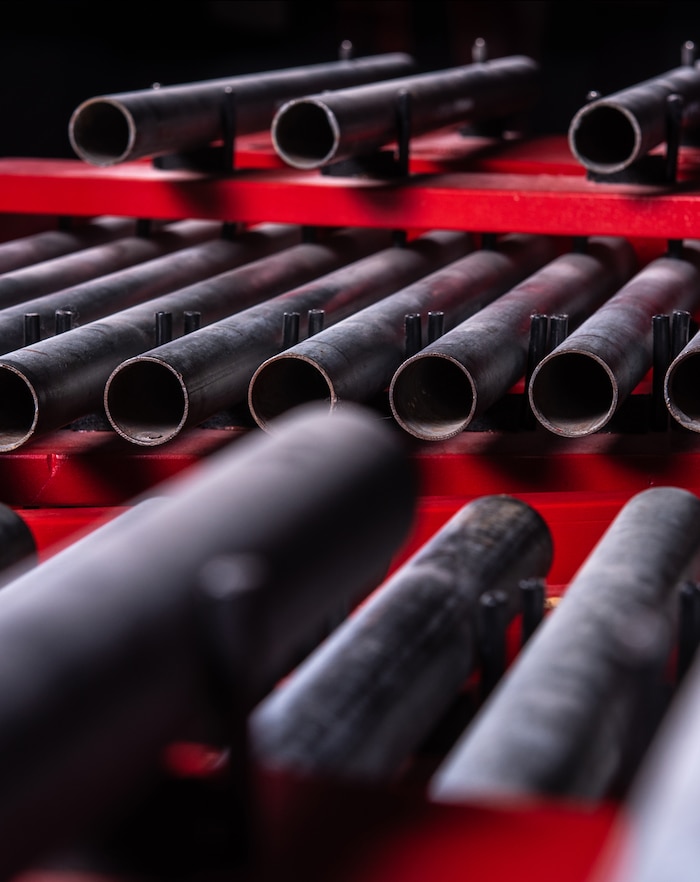
Soon after the creation of the instruments came the need to preserve them. Soltes says, “I spent a month in the 1980s with Bill and Lou in Hokkaido, Japan, in a cabin in the woods trying to renovate those instruments well enough for a performance, using what we could order in Japanese from the hardware store. It was pretty hilarious. But when the performance finally happened, older Japanese people came up to Lou in tears, and said ‘How did you know our childhood memories?’ And for that generation to be brought to tears, was very moving. They had lived through the bombing. The piece, La Koro Sutro, the Heart Sutra, sung in one of Lou’s prefered libretto languages, Esperanto, by a chorus of 100, is a reference to that: to try to make peace. That’s when I thought, ‘This music cannot die, there has to be another set made. We need something that can pop out of a box, not a whole erector set like this.’”
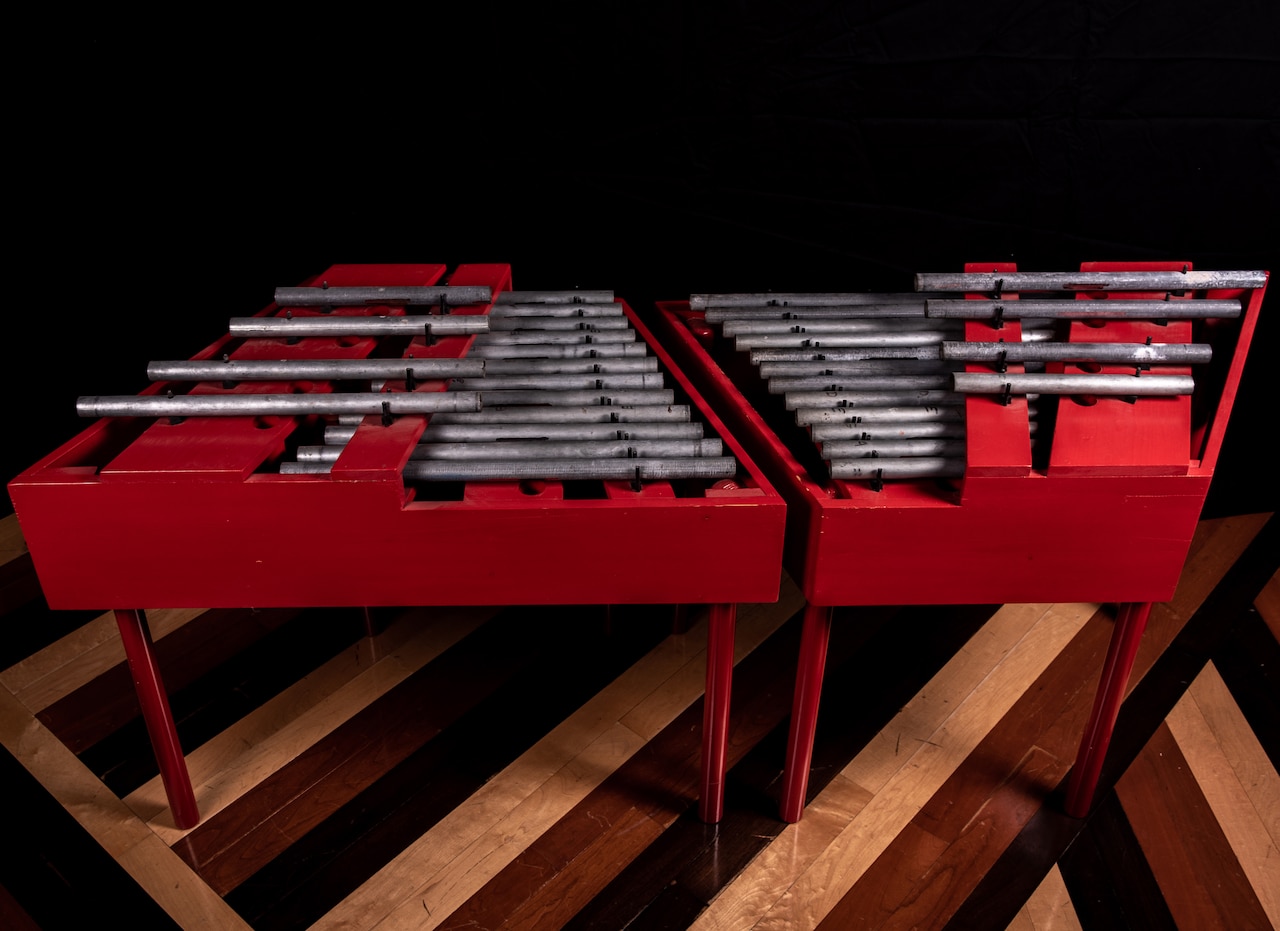
In 1992, Soltes spearheaded a fundraiser to build a replica of Old Granddad, a test run for doing the same with other pieces of the instrumentarium. The three of them headed out to Moab, Utah, to meet with instrument-maker Richard Cooke, who built several other replicas as well, which now travel across the country for dozens of performances a year. “My first association with Lou Harrison wasn’t through music,” Cooke said in a 2007 lecture at Indiana’s Percussive Arts Society, where the original Old Granddad and other Colvig instruments are stored. “It was in the mid-’80s, through a quote of his in the preface to a book called Sound Designs. ‘Making an instrument,’ Lou said, ‘is one of music’s greatest joys. Almost no pleasure is to be compared with the first tones, tests and perfections of an instrument one has just made. Make an instrument. You will learn more in this way than you can imagine.’”

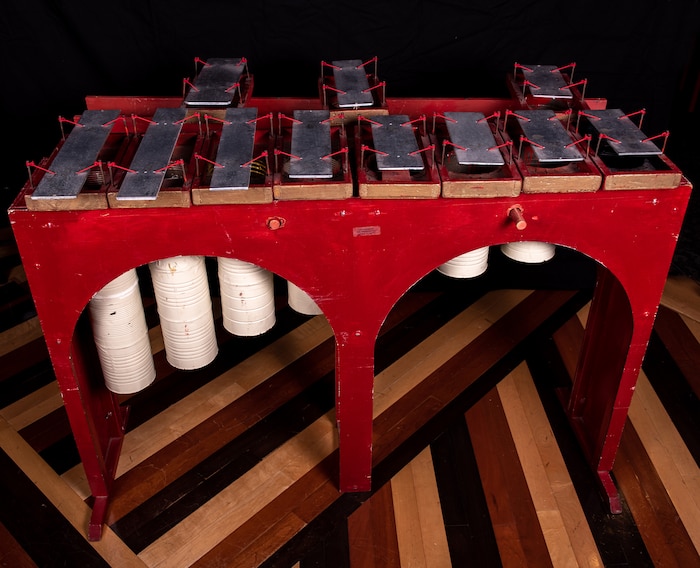
And what is it like to play a gigantic gamelan, besides maybe having to reach farther than you usually would? One was recently rolled out at the San Francisco Symphony’s experimental performance venue Soundbox. “The gamelan instruments Lou constructed are similar to playing a vibraphone, except without the pedal to control the duration of the resonance, leaving a wild element hanging in the air,” said Jacob Nissly, the Symphony’s principal percussionist. “Taken together, the ensemble had a ‘sum is greater than the individual parts’ effect.”
Turning toward their concerns for the environment and feeling their advancing age, Colvig and Harrison abandoned building new instruments in the ’90s in favor of constructing an entire house in Joshua Tree National Parl out of ecologically friendly straw bales. As a pristine venue for acoustic performances, the Harrison House would itself be a kind of instument, another communal excerise in music and life. Colvig died in 2000, two years before the house was completed, but Harrison enjoyed a year of it before he passed away in 2003.
“I don’t think Lou had any idea of how many instruments Bill had made and how intricate they were,” Soltes says, “until Bill died and Lou looked through Bill’s stuff. It turned out Bill had made over 300 instruments. There was production happening almost all the time. Bill, in some ways, was the silent partner. Lou was out in front in the world in a very public way. And Bill would just go about his work and be extremely supportive of Lou.
“When they met, Bill had not been out an out gay man. He said to me that he was somewhat suicidal when he met Lou, because he had been convinced that he could go to therapy and get over being gay. And Lou just brought him out, boom. So Bill was very indebted to him in that way. They were devoted to each other. And they were devoted to what they were building together.”
Header image © Ted Somerville
